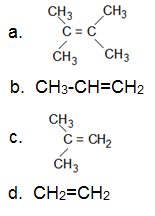Structural
Organisation in Plants
(Morphology and Anatomy of
Flowering Plants)
Biology (Botany) India Study Solution
Test Series (Prepare with Confidence)
Preparation
Guide for NEET, MCAT, AIIMS | BDS, MBBS Admission Tests
Hi Guys,
Welcome back
to your own site India Study Solution
From
today we are starting a new chapter Structural Organisation in Plants -
Morphology and Anatomy of Flowering Plants in Biology (Botany) which will have 30 - 35 sets of MCQ test series along with our
notes and study materials, each set containing 10 questions with their hints
& solutions (check at the end).
As
you are aware India Study Solution test series questions are very helpful for
preparation and of course, enhance your confidence level before appearing NEET-UG,
MCAT, MBBS Admission Tests or any other such competitive exams.

Please scroll down to find syllabus
Structural Organisation in Plants: Morphology and Anatomy of Flowering Plants
Friends
if you have not subscribed us yet then you are missing many important things. To
keep yourself updated do subscribe
India Study Solution (free, Subscribe
button given in the sidebar) before you forget so that you are inboxed whenever we
publish anything of your interest.
You are also welcome to follow / share us on Face Book, Twitter.
Botany Objective Questions: Structural Organisation in Plants
Morphology
and Anatomy of Flowering Plants
India Study Solution MCQ Test Series – Set 1 (Q. No 1-10)
Question 1: The
albuminous cells occur in the
a. Dicots
b. Monocots
c. Gymnosperms
d. All of these
Question 2: Tissue which is responsible for growth in the thickness of a dicot root or stem is
a. Cambium
b. Cork
c. Storage tissue
d. Root parenchyma
Question 3: Interfascicular cambium develops from the cells of
a. Xylem parenchyma
b. Endodermis
c. Pericycle
d. Medullary rays
Question 4: One of the primary function of the ground tissue in a plant is
a. Photosynthesis
b. To protect
the plant
c. To anchor the plant
d. Water and sugar
conduction
Question 5: Plant tissues are divided into meristematic and permanent tissues on which of the following basis?
a. Whether the
plant is a dicot or a monocot
b. Whether the
cells being formed are capable of dividing or not
c. Position
d. Origin
Question 6: Angular collenchyma is found in
a. Althaea
b. Cucurbita
c. Lactuca
d. Salvia
Question 7: Closed vascular bundles lack
a. Cambium
b. Pith
c. Ground tissue
d. Conjunctive tissue
Question 8: In root, the tangential as well as radial walls of the barrel-shaped endodermal cells have a deposition of water impermeable, waxy material-suberin in the form of
a. Cuticle
strips
b. Protein
strips
c. Casparian strips
d. Silicious strips
Question 9: Companion cells in plants are associated with
a. Vessels
b. Sieve tube
elements
c. Tracheids
d. Phloem fibres
Question 10: The embryonic layer responsible for the development of Pericycle is
a. Periblem
b. Plerome
c. Dermatogen
d. Calyptrogen
Morphology and Anatomy of Flowering Plants (Syllabus):
Morphology and modifications; Tissues and Tissue
systems; Anatomy and functions of different parts of flowering plants: Root,
Stem, Leaf, Inflorescence - Cymose and Recemose, Flower, Fruit and Seed;
Dicotyledonous and Monocotyledonous Plants
Answers of India Study Solution MCQ Test
Series Set-1
https://www.indiastudysolution.com
Answer 1:c. Answer 2: a. Answer
3: d. Answer 4: a. Answer 5: b. Answer 6: d. Answer
7: a. Answer 8: c. Answer 9: b. Answer 10: b.














